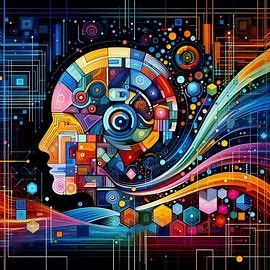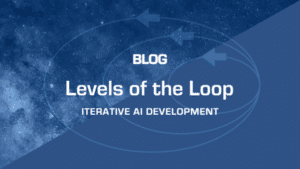 “System 1” and “System 2” are terms popularized by Daniel Kahneman in his book “Thinking, Fast and Slow”, which describe two different modes of thought that govern our [human] decision-making process. There are great parallels between human cognitive processes and artificial intelligence:
“System 1” and “System 2” are terms popularized by Daniel Kahneman in his book “Thinking, Fast and Slow”, which describe two different modes of thought that govern our [human] decision-making process. There are great parallels between human cognitive processes and artificial intelligence:
Large Language Models (LLMs) like GPT-4 are Analogous to System 1:
- Automatic and Fast: LLMs process information and generate responses quickly and efficiently, similar to the automatic, fast processing of System 1 in humans. They are trained on vast amounts of data and can generate responses without deliberate step-by-step reasoning.
- Intuitive and Pattern-Based: Like System 1, LLMs are good at pattern recognition. They excel in tasks that require understanding language patterns, context, and nuances, much like how System 1 in humans handles intuitive judgments.
- Effortless Processing: For an LLM, generating text based on learned patterns is a relatively effortless process, requiring computational power but not the kind of deliberate effort associated with human System 2 thinking.
- Limited Critical Evaluation: Similar to human System 1, LLMs don’t naturally engage in deep, critical evaluation of the content they generate. They can replicate biases present in their training data and might generate plausible but incorrect or nonsensical answers.
- Automatic and Fast: LLMs process information and generate responses quickly and efficiently, similar to the automatic, fast processing of System 1 in humans. They are trained on vast amounts of data and can generate responses without deliberate step-by-step reasoning.
Symbolic Reasoning is Analogous to System 2:
- Deliberate and Slow: Symbolic Reasoning involves explicit, rule-based processing. It’s more akin to the slow, deliberate, and effortful thinking characteristic of human System 2. It involves logical reasoning, working through problems step by step, much like a human consciously working out a complex problem.
- Analytical and Logic-Based: Symbolic systems excel in tasks that require strict logic, precise definitions, and clear rules. They are good at tasks that involve formal logic, mathematics, and other areas where explicit rules apply.
- Effortful and Requires Resources: Just as System 2 tasks are mentally taxing for humans, symbolic reasoning systems require significant computational resources to process complex rules and relationships, especially as the complexity of the task increases.
- Controlled and Transparent: The processes in symbolic reasoning are more transparent and controllable compared to LLMs. Like human System 2, symbolic reasoning follows a clear, understandable path of logic, making it easier to track how a conclusion was reached.
- Deliberate and Slow: Symbolic Reasoning involves explicit, rule-based processing. It’s more akin to the slow, deliberate, and effortful thinking characteristic of human System 2. It involves logical reasoning, working through problems step by step, much like a human consciously working out a complex problem.
In practice, the most powerful AI systems integrate aspects of both approaches. That’s how we’ve designed Jaxon. We use an LLM for understanding and generating natural language, and combine it with a symbolic reasoning system for tasks that require rigorous logic and precision. This combination mimics the way human cognition utilizes both intuitive and analytical thinking to navigate a wide range of tasks and challenges.
Want to learn more? Contact us!


